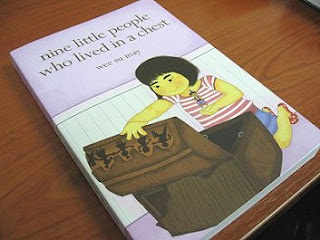When you've just submitted a book review, it's very hard to resist the temptation of reading what other reviewers at international papers think about the book. Look how John Crace's "Digested Reads" at The Guardian sums up Everyone Loves You. The impression I got is that nobody likes the book at all.
I abhor the media circus around celebrities, even if it is part of the game. Fame is a fickle thing, and it can all go away in an instant. If you take away the bling, the wealth, the on-screen persona - the celebrity - would that person still be attractive?
So Strauss's bibliography includes a pornstar's memoirs and accounts of his experiences with a bunch of pick-up artists. And maybe Everyone Loves You does look like it's slapped together from bits scavenged from the cutting room floor. That doesn't mean everything he writes should be dismissed. The paparazzi have been telling us for years what Strauss seems to be getting at with this book: celebrities are human. They have bad days, they make mistakes, and they can buckle under pressure. And they should (probably) be allowed to do that without being so harshly judged.
The part about Paul Nelson is particularly poignant, even with the seemingly put-on Hemingway-esque reference to the baby shoes. Also notable are the eleven points of his "instructions for living", based on the interviews in the book. The strange title is explained in Point #11. Buy it to find out. Get the discount coupon.
Reminder to be happy
first published in The Star, 29 May 2011
"In memory of Johnny Cash, Curtis Mayfield, and Bo Diddley, all of whom died between the time of being interviewed and the publication of this book. And for all those who are going to die afterward." With a dedication like that, you know the book is going to be good.
As a pop culture journalist, author and ghostwriter, Neil Strauss had, among other things, fired off guns with rapper Ludacris, been kidnapped by Courtney Love, made Lady Gaga cry, received Scientology lessons from Tom Cruise, tucked Christina Aguilera into bed, and more.
And now, he feels it's time to do justice to his subjects, using over 200 handpicked minutes out of his trove of unused interview material. "Instead of looking for the pieces that broke news or sold the most magazines or received the best feedback, I searched for the truth or essence behind each person, story, or experience." Strauss writes, and insists that one minute is enough. "You can tell a lot about somebody in a minute. If you choose the right minute."
Though one isn't sure about the veracity of the one-right-minute theory, Everyone Loves You When You're Dead is one very not-safe-for-work display of dark humour, a mishmash of often funny and revealing anecdotes, Q&As, and narratives. Equally funny conversations with music lawyers and copy editors add to the experience, which is balanced by the sombre extracts from obituaries Strauss has written.
While the caricatures and the old-style newspaper look gels with the eclectic, eccentric content, the unlabelled "selected visual index" is useless to those who can't match the faces to the names; the real index, meanwhile, is a litany of horrors. Reading is rough sailing, with many interviews broken up into parts "to be continued" in later pages.
It's hard to guess whether this is one of those name-dropping memoirs, or a genuine attempt to hold a mirror up in front of his subjects, his peers, himself, and the entire American entertainment industry. I think Everyone Loves You is meant to be more serious than satire, but it has moments of hilarity. Look out for Twilight heartthrob Taylor Lautner's one-line replies when drilled about his "squeaky-clean reputation", and how singer-songwriter Ryan Adams ends his answers with an F-bomb. A running joke involves Pharrell Williams of the hip-hop outfit The Neptunes constantly rescheduling his interview; also, learn how Justin Timberlake saved the day.
Whatever doubts one has in the author's motives for the book is dispelled by his piece on a predecessor: former Rolling Stone record reviews editor Paul Nelson (1936–2006). Strauss admits that it was hard to pen, and not just because of his respect for the late Nelson and the people who would read it. "Every word brought me closer to my own cautionary tale – or that of any writer, creative person, or dedicated follower of art, entertainment, or culture. Because it makes you ask: In the end, is it worth it?"
Probably not for Nelson. The man who'd done so much for the likes of Bob Dylan and Rod Stewart died alone and broke. A pair of baby shoes that belonged to Nelson's son, found hanging near his bed, still haunts Strauss: "... because as someone who's sacrificed personal relationships for the pursuit of culture and career, I know what (those shoes) symbolize: the regret of someone who has spent his entire life with his priorities wrong." I could say the same about many of today's pop culture vultures.
Just as we're overdosing on "tiger blood", "winning" and whatnot, here comes this timely reminder of the humanity behind the hype. Among the most poignant are the interviews with those that have since made it big or got bigger, bounced back from whatever hole they dug for themselves, or passed on. Almost every obituary made me think of our own late great P. Ramlee.
The book ends with a toast to "the artists, celebrities, and crazy people of the world" who, often inadvertently, screwed themselves up for our benefit. "Thank you not just for keeping us entertained with your mistakes, but for reminding us to be happy with who we are."
Amen.
Everyone Loves You When You’re Dead
Journeys into Fame and MadnessNeil Strauss
It Books (2011)
544 pages
Non-Fiction
ISBN: 978-0-06-154367-8
Categories:
Book Reviews,
The Star


















